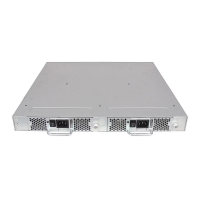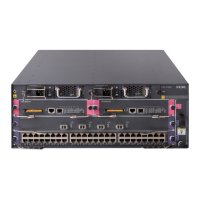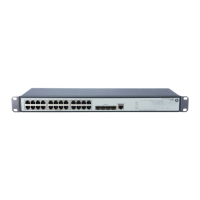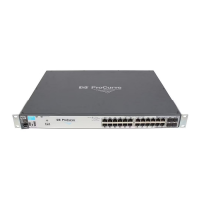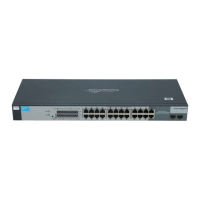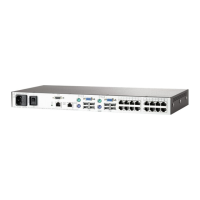• Support for AG configuration where server ports connected to the fabric core will be virtualized.
• Hardware zoning is accomplished at the port level of the switch and by WWN. Hardware
zoning permits or denies delivery of frames to any destination port address.
• Extensive diagnostics and system-monitoring capabilities for enhanced high RAS.
• Real-time power monitoring enables users to monitor real-time power usage of the fabric at a
switch level.
• Port-to-port latency minimized to 800 nanoseconds through the use of cut-through frame routing
at 16 Gbps.
Platform components
• A system motherboard that features a PowerPC 440EPx RISC CPU running at 667 MHz, with
integrated peripherals.
• An RJ-45 10/100 Base-T Ethernet system management port that supports switch IP address
discovery and configuration.
• One RS-232 serial port with an RJ-45 connector for initial switch setup and factory default
restoration. (The integral LEDs remain unlit at all times.)
• A USB port that provides storage for firmware updates, supportsave command output, and
storage for configuration uploads and downloads.
• One power supply and fan assembly in the base model. There are two fans per assembly.
An optional second power supply and fan assembly is available for redundancy and hot-swap
capability.
• One LED (green/amber) per FC port to indicate status.
• One LED (green) for system power.
• One LED (green/amber) for system status.
• Two Ethernet port LEDs (integrated with RJ45) for speed and port activity. (A green LED for
port speed and an amber LED for port activity.)
• SEEPROM for switch identification.
• Voltage, fan, and temperature monitors.
• RTC with battery.
Port side of the switch
Figure 4 (page 13) shows the port side of the HP SN3000B 16Gb FC Switch.
Figure 4 Port side view of the HP SN3000B 16Gb FC Switch
2. Management Ethernet port with LEDs1. System status LED
4. FC ports (0-3)3. USB port
6. Serial console port5. System power LED
8. FC ports (4–7)7. Switch ID pull-out tab
HP SN3000B 16Gb FC Switch 13

